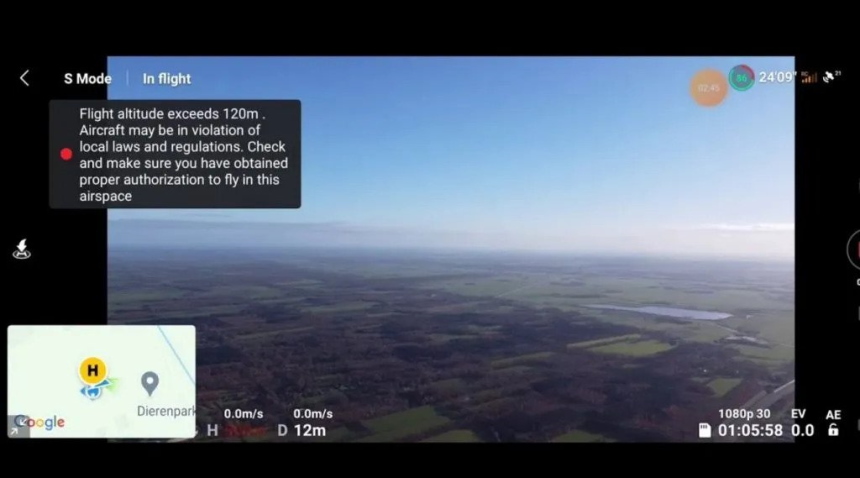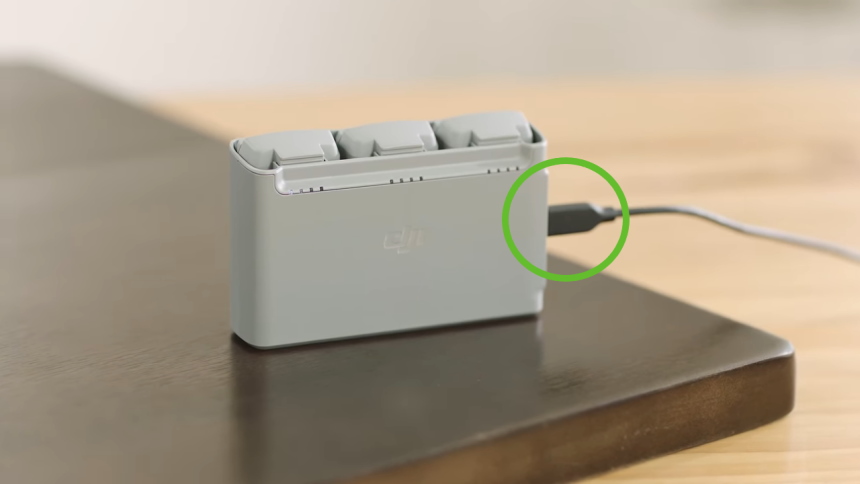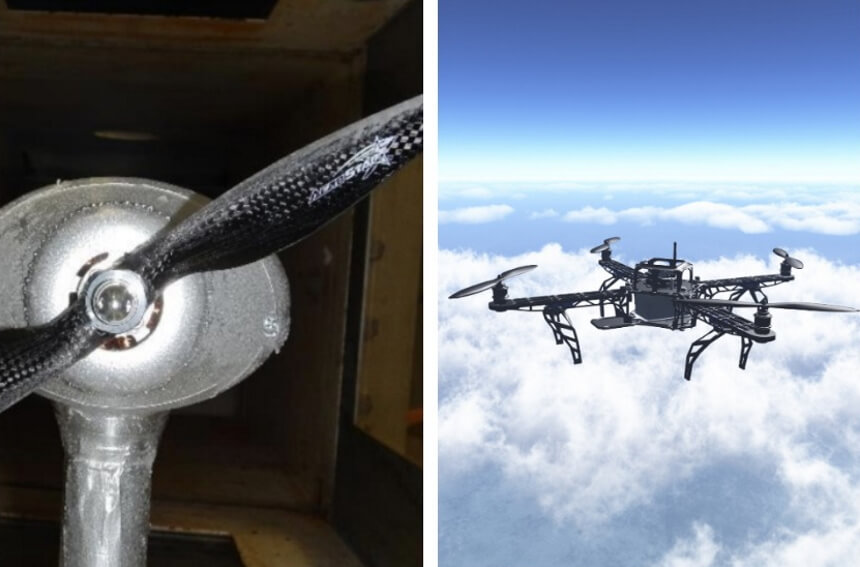Flying at altitude gives access to wonderful landscapes for our shots. However, this induces certain constraints, often unknown to the general public.
We will therefore try to shed light on the DJI Mini 2 max altitude, its consequences on the engine and power supply, and the precautions to be taken to fly safely in these rather extreme conditions for a drone. Also, this article will give you a broad view of altitude flying, what the current flight regulations on small UAV’s altitude are and why the rules are enforced.
By default, the Mini 2 can fly up to 500 meters Trusted Source Is there a Max Altitude Take Off Limit? | DJI FORUM Is there a Max Altitude Take Off Limit? forum.dji.com from the take-off point but the default DJI Mini 2 height limit is 120 meters. However, some drone brands can go even a bit higher; when we have to make a Holy Stone vs DJI comparison, you’d find out that some Holy Stone drones can go up to 600 meters.
Remember that in the US, small unmanned aviation vehicles are not allowed to exceed 400 feet in height so as not to crash or interfere with bigger aircraft in the sky.
But a DJI drone has once been filmed at a flight of 6500 meters. The video shows a quad-rotor drone flying over 6000m above sea level over a mountain on Mera Peak in Nepal.
Also, in the video below, a DJI Phantom drone is seen in Tanzania performing a flight over the highest mountain in Africa: the Kilimanjaro which rises to almost 5600m.
High altitude, extremely low temperatures, and strong winds make drones almost impossible to operate and yet DJI’s drones still show us the feats they achieve. These two drones mentioned above went over 6,000 meters but the maximum you can get with the DJI Mini 2 is 4,500 meters (the takeoff altitude and the flight height).
Today, professional technical drones like the DJI Matrice 210 would be more suited to this type of mission (flying above tall mountains) but the flight operation is illegal.
The distance is limited by default to 6 miles on Dji Mini 2, but you can remove this limit in the settings. In this case, it is the radio range that will physically block you. Remember that you are required by regulations to fly in direct sight.

We can then simply note that when flying at 5000m, with an equivalent configuration, the range is almost halved compared to the plain.
These are theoretical values that will vary depending on the wind conditions, the wear and tear of your batteries, the humidity of the air, etc.
To change the max altitude or remove the limit on DJI Mini 2, follow these steps:
In the settings, it is possible to push this limit to 500 meters. However, a warning message invites you to respect the regulations when you go above them.
DJI says the Mini 2 is capable of flying up at an altitude of 4000 meters. Meanwhile, the DJI Mavic Air 2 Drone Fly More Combo’s max height is 3.10 miles, which is approximately 5,000 meters, according to DJI.
Above this altitude limit, the lift is insufficient and you risk upsetting the piloting assistance algorithms when removing the limit. Do not confuse height and altitude, we are talking about the altitude at which we take off, not the one at which we make the drone climb.
In the US, small unmanned aviation vehicles are not allowed to exceed 400 feet Trusted Source Drone Regulations: What You Need to Know | PCMag Want to fly a quadcopter? Here’s what the FAA expects you to know. www.pcmag.com in height so as not to crash with bigger aircraft in the sky.
The flight limit for civilian drones is set at 150m AGL in many parts of Europe. This distance corresponds to an elevation altitude in relation to the take-off point of the machine.
It is then possible to take off from any altitude, simply by respecting this elevation value.

The batteries must be stored at temperatures above fifteen degrees or even preheated before takeoff. The easiest solution is to put them in your pocket or inside a jacket, size permitting, for a few minutes.
Make sure to adjust the drone’s monitoring parameters and battery alarms according to the flight conditions, in particular the “failsafe” parameter which allows an automatic return to the machine’s take-off point. Sufficient autonomy will then be chosen to cover the return distance.
Better to have a little more battery juice than to leave your machine falling on a snowy slope!
Fly calmly so as not to strain the batteries too much and be prepared to react to sudden drops in voltage.
Avoid driving through clouds or mist to avoid frost problems on the propellers.

Frost may also form on the propellers depending on humidity and temperature conditions. This phenomenon can be very disruptive because it can generate vibrations which will cause anomalies on the inertial unit (gyroscopes and accelerometers) which generally lead to a crash.
The DJI Mini 2 boasts a top flight speed of 36 mph (57.6 kph) with a maximum flight duration of 31 minutes. It can fly as far as 10km away in perfect conditions.
Initiating an RTH (Return to Home) command on a drone will prompt it to fly back to the HomePoint at a height of 800ft. Upon reaching the HomePoint, the drone will then descend and touch down.
4,000 meters is the DJI Mini 2 max altitude but it can fly 500 meters higher, according to the manufacturer. Generally speaking, drones are high-powered machines capable of reaching dizzying heights. Precision drones can reach altitudes above 20,000 feet. You should also take into account that the general meaning of altitude is height. However, in the aviation industry, altitude can have several different meanings.
The highest altitude of a drone depends on various factors. These include the propulsion system, the battery, weather conditions, the experience of the flier, and more.